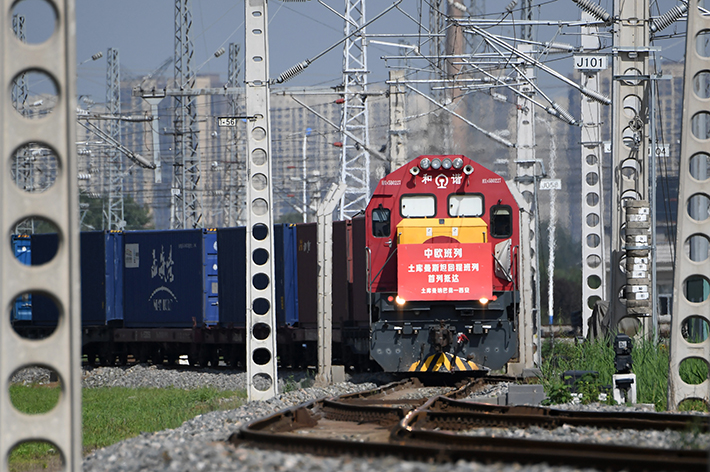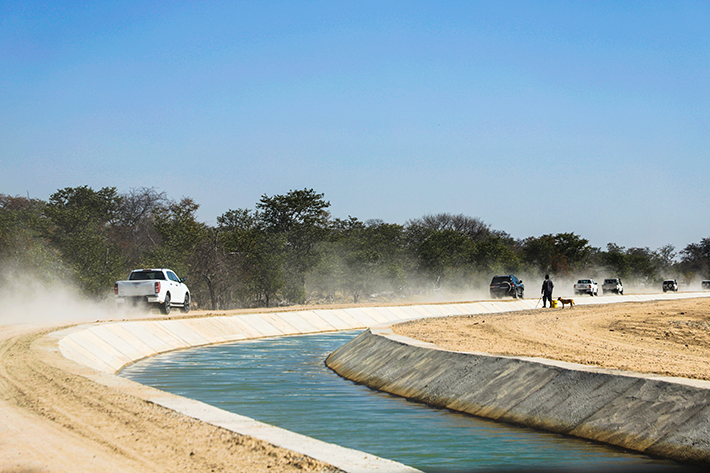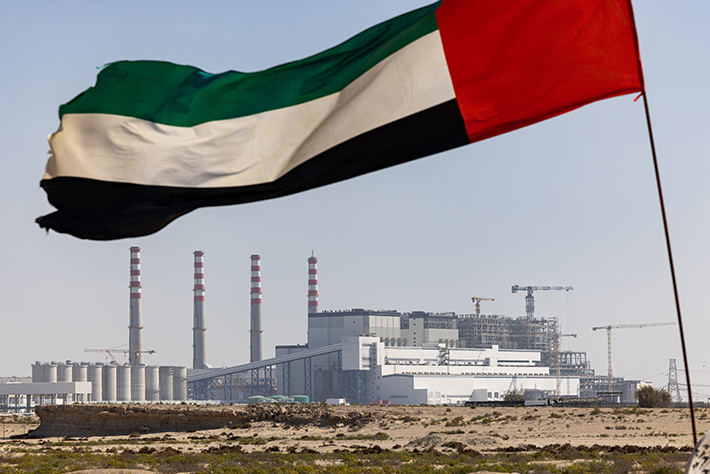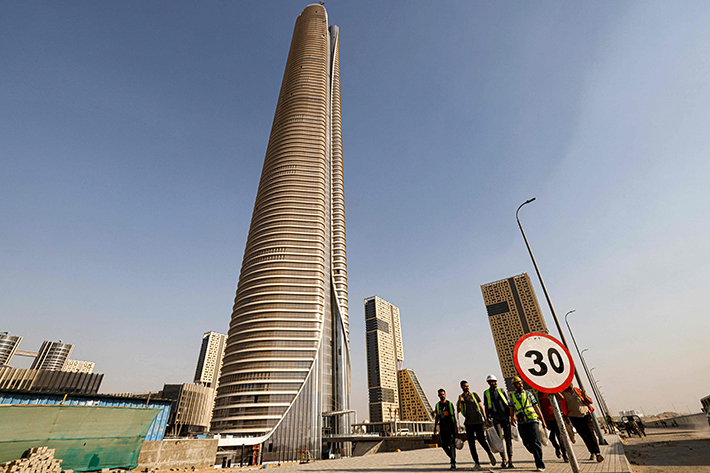|
||||||||||
| Home Nation World Business Opinion Lifestyle ChinAfrica Multimedia Columnists Documents Special Reports |
|
||||||||||
| Home Nation World Business Opinion Lifestyle ChinAfrica Multimedia Columnists Documents Special Reports |
| Current Cover Story |
| A Valuable Collaboration Platform |
| The Belt and Road Initiative has gained wide popularity because of its advantages |
| By Liu Xinlan | VOL. 15 October 2023 ·2023-10-12 |

A China-Europe freight train carrying herbs from Turkmenistan arrives at Xi’an, Shaanxi Province in northwest China, on 31 August 2022 (XINHUA)
Chinese President Xi Jinping proposed the joint construction of the Silk Road Economic Belt in September 2013 in Kazakhstan, and the 21st Century Maritime Silk Road in the following month in Indonesia, together known as the Belt and Road Initiative (BRI). In a decade, the BRI has become a reality, reviving the ancient Silk Roads.
The BRI, based on history and proposed by China, concentrates on the future and benefits the world as a whole. According to Ahsan Iqbal, Pakistan’s former minister of planning, development and special initiatives, the noteworthy aspect of this initiative lies in the spirit of sharing. China is sharing its experience with developing countries to achieve mutual prosperity and build a community of shared future for mankind.

Cars pass by a water channel of a drought relief project undertaken by Chinese company POWERCHINA in Cunene Province, Angola, on 5 July (XINHUA)
Joint development
Over the past decade, the joint construction of the BRI has made significant progress. According to Martin Albrow, one of the creators of the concept of “globalisation” and a British sociologist, the BRI has demonstrated impressive resilience and is poised to flourish in the post-pandemic landscape.
China has signed more than 200 cooperation agreements on the BRI with 152 countries and 32 international organisations. According to data from the Ministry of Commerce of China, between 2013 and 2022, the volume of merchandise trade between China and partner countries in the BRI increased from $1.04 trillion to $2.07 trillion, and cumulative two-way investment surpassed $1 trillion. As Mahbub Uz Zaman, Bangladesh’s former ambassador to China, stated, contributing to the development of the BRI can genuinely benefit all nations.
Over the past decade, cooperation in the joint construction of the BRI has launched more than 3,000 cooperation projects, created 420,000 job opportunities for partner countries, and lifted nearly 40 million people out of poverty. In 2019, as per a survey conducted by the Pew Research Centre, about three quarters of the countries in Africa and the Middle East and roughly two thirds of the nations in Latin America believed that China’s economic advancement was beneficial for them. Most surveyed countries have established cooperation with China under the framework of the BRI.

A national flag of the United Arab Emirates is seen near the Hassyan Power Complex in Dubai, United Arab Emirates, on 5 February 2022 (VCG)
Global interconnection
The joint construction of the BRI aims to promote global interconnection, unlock potential for collaboration in diverse fields, and contribute to regional economic integration and common development. Several countries have opted to align their development strategies to the BRI to foster deeper collaboration. Over the past decade, the BRI has faced a multitude of challenges, including the global economic recession and the impact of COVID-19. However, it has garnered international recognition for its achievements. According to the Bruegel, the European think tank that specialises in economics, the BRI has been particularly well received by developing countries.
As the BRI gathered pace, Western nations endeavoured to create competing replacements, including the Blue Dot Network and Build Back a Better World initiatives in the United States, and the Global Gateway strategy in Europe. Nevertheless, these purported alternative schemes have faced bottlenecks and challenges.

Workers walk near the Iconic Tower being built with Chinese assistance in Egypt’s New Administrative Capital on 1 August (VCG)
Valuable content
In the past decade, the joint construction of the BRI has expanded along five axes - land, sea, air, cyberspace, and ice. The project began with six corridors and routes serving various nations and ports. Simultaneously, other initiatives, including the Digital Silk Road, the Health Silk Road, and the Green Silk Road, have been introduced.
The Digital Silk Road possesses significant potential for development.
As a significant initiative put forward by China to promote worldwide common development in the digital economy era, the Digital Silk Road is drawing interest from countries in Africa that aspire to spur economic growth and accomplish digital transformation. Bolstering collaboration in digital technology between China and Africa will assist the latter in rapidly advancing into the information age.
The Green Silk Road is widely recognised as China’s solution to global sustainable development, providing a win-win alternative for both economic development and environmental preservation. It plays a crucial role in establishing China’s leadership in ecological initiatives. The Centre for Global Energy Policy and the Paulson Institute view the BRI as a means for China to display their proficiency in eco-friendly financing.
The Health Silk Road holds great significance. During the crucial period of combating COVID-19, this corridor garnered widespread recognition from the global community. Amid the pandemic, the countries involved in the BRI demonstrated solidarity by assisting each other. China spearheaded extensive international collaboration to combat the pandemic, showcasing its status as a major responsible nation.
In a decade, BRI has evolved into a public asset and collaboration platform that has gained immense recognition from the global community. The BRI boasts an expanding network of members and partnerships that are gradually intensifying. However, the development of the initiative over the past decade is only a starting point. Currently at a crucial juncture, the initiative remains critically significant to the world.
Progress Achieved Under the BRI Over The Past Decade
Policy Coordination
Over the past 10 years, China has signed more than 200 cooperation documents on the joint implementation of the BRI with 152 countries and 32 international organisations, covering 83 percent of the countries with which China has established diplomatic relations.
Facilities Connectivity
The China-Europe Railway Express covers 211 cities in 25 European countries, and the New International Land-Sea Trade Corridor has connected China’s central and western regions with more than 300 ports in over 100 countries.
Unimpeded Trade
From 2013 to 2022, the imports and exports of goods between China and the BRI participating countries increased by an average of 8.6 percent annually. The accumulative two-way investment has exceeded $270 billion.
In the overseas economic and trade cooperation zones built by Chinese enterprises in the BRI related countries, 420,000 local jobs were created over the past decade.
Financial Integration
So far, the BRI has established more than 3,000 cooperation projects and stimulated nearly $1 trillion of investment, creating an array of national landmarks, livelihood projects and milestones of cooperation.
According to the World Bank, by 2030, the BRI transport infrastructure, if fully implemented, is expected to increase global real income by 0.7 percent to 2.9 percent, lifting 7.6 million people out of extreme poverty and 32 million people out of moderate poverty.
People-to-People Exchanges
China and other BRI countries have conducted diverse forms of cultural exchange, including hosting arts festivals, film festivals, music festivals, cultural relics exhibitions and book fairs.
The Silk Road International League of Theatres, the Silk Road International Museum Alliance, the Network of Silk Road Arts Festivals, the Silk Road International Library Alliance, and the Silk Road International Alliance of Art Museums and Galleries have been established.
As of the end of 2019, China had signed mutual recognition agreements on higher education degrees with 24 BRI countries. A total of 60 Chinese colleges had set up educational institutions in the BRI countries, and 16 had established 17 joint laboratories in these countries.
China has expanded cooperation with BRI countries in tourism. It has held activities such as joint years of tourism with many countries, initiating cooperation mechanisms such as the Silk Road Tourism Promotion Union, the Maritime Silk Road Tourism Promotion Alliance, and Tea Road International Tourism Alliance. China has made mutual visa exemption agreements or arrangements with 150 countries over the past decade.
Highlights in New Areas of Cooperation
Pragmatic cooperation has been deepened in green infrastructure, green energy, green transportation, green finance and other fields. With regard to environmental protection, China has signed about 50 documents with relevant parties under the BRI platform during the past 10 years, and jointly launched the BRI Green Development Partnership with 31 countries.
Twenty-nine countries have established bilateral e-commerce cooperation mechanisms with China.
The author is researcher of Academy of Contemporary China and World Studies
| About Us | Contact Us | Advertise with Us | Subscribe |
| Copyright Beijing Review All rights reserved 京ICP备08005356号-5 京公网安备110102005860号 |